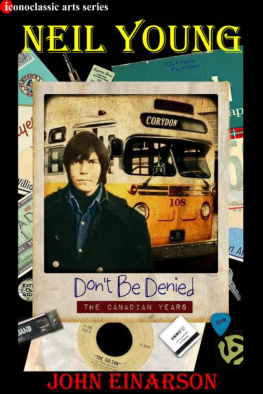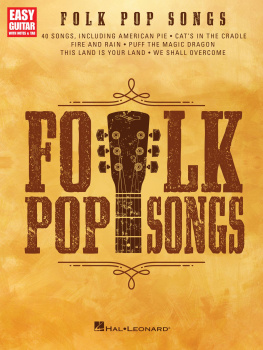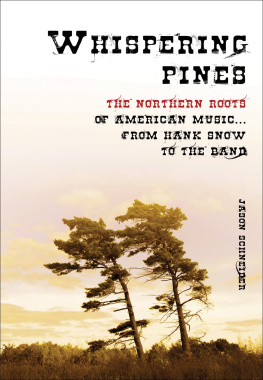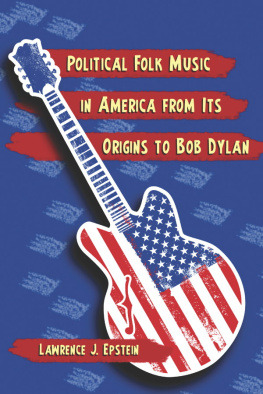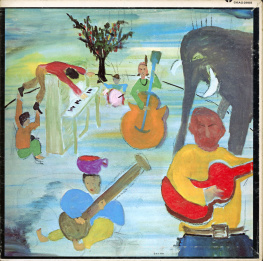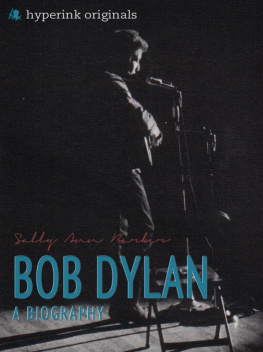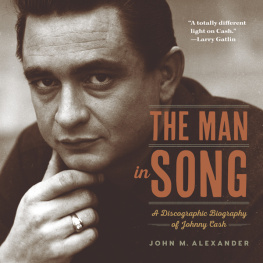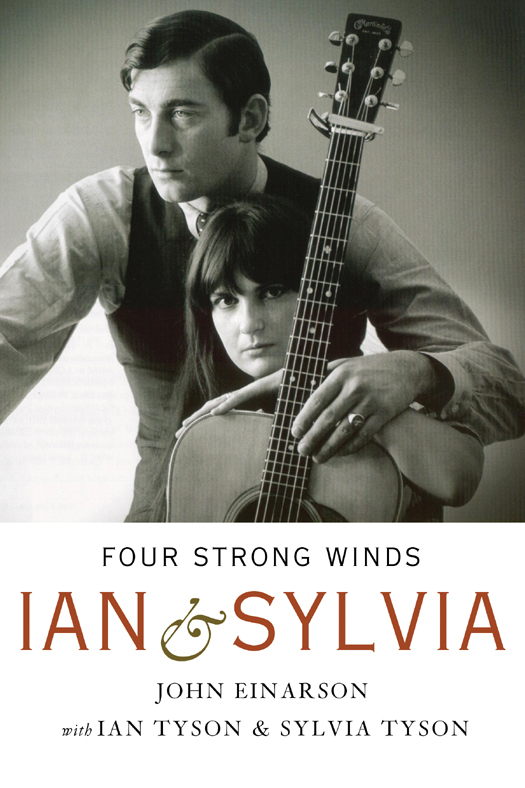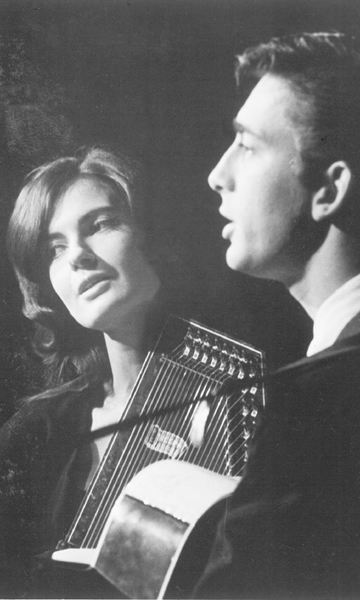
Copyright 2011 by John Einarson
All rights reserved. The use of any part of this publication reproduced, transmitted in any form or by any means, electronic, mechanical, photocopying, recording, or otherwise, or stored in a retrieval system, without the prior written consent of the publisher or, in case of photocopying or other reprographic copying, a licence from the Canadian Copyright Licensing Agency is an infringement of the copyright law.
Library and Archives Canada Cataloguing in Publication
Einarson, John, 1952
Four strong winds : Ian and Sylvia / John Einarson with Ian Tyson and Sylvia Tyson.
eISBN: 978-0-7710-3040-6
1. Ian & Sylvia. 2. Tyson, Ian, 1933-. 3. Tyson, Sylvia, 1940-. 4. Folk singers-Canada-Biography. I. Tyson, Ian, 1933- II. Tyson, Sylvia, 1940
III. Title.
ML421.T977E35 2011 782.421620092 C20119019892
We acknowledge the financial support of the Government of Canada through the Book Publishing Industry Development Program and that of the Government of Ontario through the Ontario Media Development Corporations Ontario Book Initiative. We further acknowledge the support of the Canada Council for the Arts and the Ontario Arts Council for our publishing program.
Every effort has been made to trace copyright holders and to obtain their permission for the use of copyright material. The publisher apologizes for any errors or omissions in the above list and would be grateful if notified of any corrections that should be incorporated in future reprints or editions of this book.
Published simultaneously in the United States of America by
McClelland & Stewart Ltd., P.O. Box 1030, Plattsburgh, New York 12901
Library of Congress Control Number: 2011930066
Cover photograph: Paul Rockett, courtesy of Elliott Contemporary Toronto
Cover design: Terri Nimmo
McClelland & Stewart Ltd.
75 Sherbourne Street
Toronto, Ontario
M5A 2P9
www.mcclelland.com
v3.1
C ONTENTS

INTRODUCTION: FOUR STRONG WINDS
N ew Yorks fabled Town Hall, at 123 West 43rd Street between Sixth Avenue and Broadway, is, like Carnegie Hall (the citys other renowned performance venue), more than just a concert location or another stop on a tour itinerary. A Town Hall engagement is a milestone in any artists career, a pinnacle, a measure of success, and a sign that you have, indeed, arrived. Spearheaded by the League for Political Education, a suffragette movement determined to create a utilitarian meeting hall, and opened in 1921, the venerable 1,500-seat venue is known for its superb acoustics. Folk artists were especially fond of performing at Town Hall because of its unique sound qualities that lent themselves to acoustic folk music. The Clancy Brothers and Tommy Makem, Bob Dylan, Phil Ochs, and Joan Baez had all graced the Town Hall stage. Now it was Ian & Sylvias turn.
On the evening of February 27, 1965, the Canadian folk duo, the darlings of the North American folk music circuit and heroes back home, performed to a sold-out Town Hall audience. It was a this was their unofficial coming-out event for New York audiences. It was a big moment for us.
Having gone just about as far as one could on the largely scattered Canadian folk music scene by early 1962, Ian & Sylvia headed south to New Yorks folk music mecca, Greenwich Village. With no contacts or connections and armed only with their own confidence and a list of the key folk music impresarios located in the Big Apple, the two managed to charm their way into the big leagues within a matter of days. Theirs was no Cinderella story, however; Ian Tyson and Sylvia Fricker had put in countless hours perfecting their distinctive vocal blend Ians rich baritone combined with Sylvias signature vibrato and gift for idiosyncratic harmonies before dazzling folk patrons in Toronto coffeehouses and headlining the inaugural Mariposa Folk Festival. Their repertoire, drawn from obscure traditional sources, was the envy of their contemporaries, Bob Dylan among them. In short order the duo had become a top draw on the lucrative American college circuit and were regarded in folk music circles as on par with the likes of Dylan, Baez, and Peter, Paul & Mary. Now here they were at Town Hall.
They brought so much dignity to our genre of music, acknowledges Carolyn Hester, a contemporary on the folk music scene back in the 1960s. They kind of represented the Toronto folk scene and that gave them a bit more importance to the rest of us. They didnt come down here and just become Americanized folksingers, which could have happened. And as a result a lot more of us went up to Canada to perform because of them. Adds veteran American singer/songwriter Tom Paxton, Ian & Sylvia became as much a part of the American folk music community as Peter, Paul & Mary or the Kingston Trio or anybody. I just thought they were fantastic. It was their voices that impressed me. They both sang so beautifully.
Everybody in the [Greenwich] Village loved them, recalls banjo player extraordinaire Eric Dueling Banjos Weissberg, a member of the folk group the Tarriers at the time. They were so good and it was so refreshing to hear that music done so well; great songs, great harmonies. They were regarded as being at the top of the folk music food chain. As Suze Rotolo, Bob Dylans girlfriend at the time (pictured on the cover of his The Freewheelin Bob Dylan album), points out, There was something about Ian & Sylvia that was so compelling. Their look, their voices, and their choice of songs were unique. They had this natural charisma. Bob liked Ian & Sylvia a lot. He and Ian were good friends. And Bob thought Sylvia was gorgeous. He really admired her and thought she had a wonderful voice. There werent a lot of folk duos at the time; so many came after them.
Having released three critically acclaimed albums and penned three bona fide folk music standards Four Strong Winds, You Were On My Mind, and Someday Soon Ian & Sylvia stood poised at the top of their game. As they strode onto the Town Hall stage to a rapturous response Ian, matinee-idol handsome in a well-tailored suit, guitar in hand, and Sylvia, slender and radiant in an iridescent shift dress, her long dark hair poker-straight, clutching her autoharp each paused briefly to acknowledge the adulation and drink in the moment before turning to face one another. Exchanging quick glances, they opened their set singing a cappella the traditional Elizabethan ballad The Greenwood Sidie (The Cruel Mother), one of the many songs Sylvia had researched from her books of old English ballads. With its extraordinary parallel fifth harmonies, the opening number proved, as if it were necessary, that Ian & Sylvia were in a league all their own.
We had a mystique being from Canada, Ian suggests. That was a bit of a novelty. I had the whole package because I was a cowboy from the west, not like the cowboy I became much later. And Sylvia had the look back then with the long straight hair. It was like a script writer had written the whole thing.
For the next seventy-five minutes, Ian & Sylvia, accompanied by American guitarist Monte Dunn, presented a mesmerizing mix of traditional and original folk music, from two-hundred-year-old French Canadian ballads and Mississippi chain gang wails to cowboy laments and Appalachian bluegrass, all delivered in their inimitable harmonic blend. Interspersed with the traditional folk numbers was a growing cache of original songs, including Sylvias You Were On My Mind (a pop hit later that year for We Five) and Ians cowboy-themed Four Rode By, inspired by the true story of the notorious Canadian outlaws the McLean brothers. Ian handled the between-song patter, jokes, and introductions while Sylvia, beguilingly shy, stood quietly at his side. Having recently completed recording sessions for their yet-to-be-released fourth album, the two debuted songs by then-unknown writers Gordon Lightfoot (the albums title track Early Morning Rain, as well as For Loving Me) and Steve Gillette (Darcy Farrow). Sylvias funky Maudes Blues brought the house down, while Come In, Stranger was Ians tip of the cowboy hat to friend and fellow traveller Johnny Cash.


